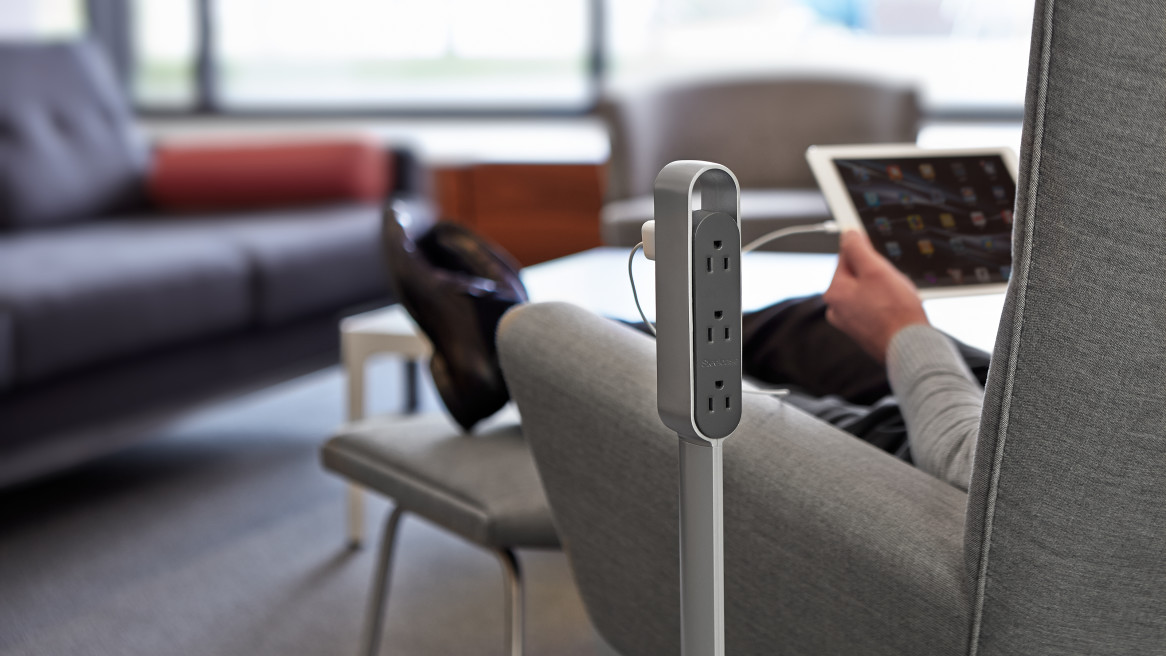
Farewell...
Workspring has chosen not to renew its lease in downtown Chicago. It has been our team’s pleasure to provide thousands of training, brainstorming and strategizing experiences to companies across the globe, and we are grateful to all of our customers. If you need to contact us, email info@workspring.com.
Workplace innovation: Make technology work for you

Image courtesy of Steelcase
Is workplace technology working for you? Many growing companies are trying out new office setups, like completely open work areas, shared desks, collaboration zones, cafés and game rooms, even stand-up furniture. The reasons behind these concepts range from boosting performance to recruiting and retaining today’s younger workforce. In all cases, we’re seeing that where we work is no longer as critical as how we work.
But too often, managers ignore a key ingredient of successful workplace innovation: the integration of technology.
Without properly planned and integrated work technology, even the best workplace design ideas can fail. Why? Because it’s hard to innovate when you can’t plug in or get a decent Wi-Fi signal. Or when shared work areas are simply too noisy. Or when audiovisual systems are unreliable, obtrusive and require trained staff to operate. Or when conference rooms lack microphones or sound like echo chambers — and the reservation systems seem to fail every week.
These are more than minor glitches. At least half of the workplace reinvention projects fail within two years — or face costly rework — because of poor technology planning, according to a global management consulting firm.
What’s the solution? First, think of workplace innovation as a three-legged stool: Leg one is physical space — architecture and interior design. Leg two is about human factors, such as change management and HR. The third is technology, including physical and networking infrastructure, software and audiovisual systems. If it’s carefully planned and integrated, this third leg keeps the workplace stable and secure. If it’s wobbly, so is your organization.
So how do you ensure the “work tech” leg of the stool is solid? Here are six rules to follow to get it right:
1. Start planning early. Even before the architect draws up plans for the new offices, the internal project team should already know all the key business needs for integrated workplace technology. Document and deliver these requirements to the workplace designers.
2. Think about sound first. Too often, acoustics are treated as an afterthought — or a given. Yet for meeting areas and especially in any wall-free open-office settings, acoustics may largely determine your employees’ quality of life. Plus your brand image will dictate how the workplace sounds — the sonic identity for one firm may be about cultivating a buzz-like atmosphere, while another may be more tranquil.
3. Expect your IT infrastructure needs to evolve. Back-of-house spaces like telecomm and equipment rooms must anticipate growth and change. And despite its fast-changing nature, Wi-Fi in the workplace works best with early planning for both convenience-grade voice/data and location-aware layouts.
4. Follow basic rules of thumb. Cerami & Associates lists a couple dozen basic yet supremely valuable design rules. For example, any applied work tech should help increase space use. Others are more granular, such as when to use built-in microphones in larger customer meeting rooms. At their core, these rules of thumb speed design direction while giving IT and facilities managers time to select products and capabilities critical to workflow.
5. Review recent, reliable technology options. On your own and with your consultants, explore integrated work technologies that help make spaces adaptable, attractive and enjoyable.
6. Remember the big picture. At its best, workplace technology is both unified and invisible, a seemingly effortless extension of daily work life. The word unified calls to mind that TV remote we all wish we had at home: It controls everything from the cable to the A/C to the dishwasher. And invisible? Anyone who ever tried to hide that snarl of tangled cables in the conference room knows what that means. Just like a light switch on the wall, everything should be seamless and integrated into its surroundings.
There’s much more to learn, but more than anything else, early planning and integration are the keys to success. That’s your mantra: To reimagine how we work, plan ahead for integrated work technology.
Workplace innovation is a tool for improving processes and enhancing communication to boost organizational success. To make more, sell more and beat the competition. We all want that. And more than ever, savvy managers at many growing businesses are seeing how integrated work technology is vital to effective workplace change.
Workspring spends a vast amount of time researching various technology that can help foster productivity and seamlessness in strategic planning sessions, training workshops, team meetings, and any other collaboration session your company or organization holds. We strive to bring in tools meant for aiding with various stages throughout the meeting so the outcome can be groundbreaking. Visit our Technology section or call us today to discuss the different technology that Workspring offers for your important and critical offsite sessions, 800 605 9092 or email Ashley at ashley@workspring.com.
Post from Upstart Business Journal; written by Matthew Ezold and Peter Babigian, Cerami & Associates